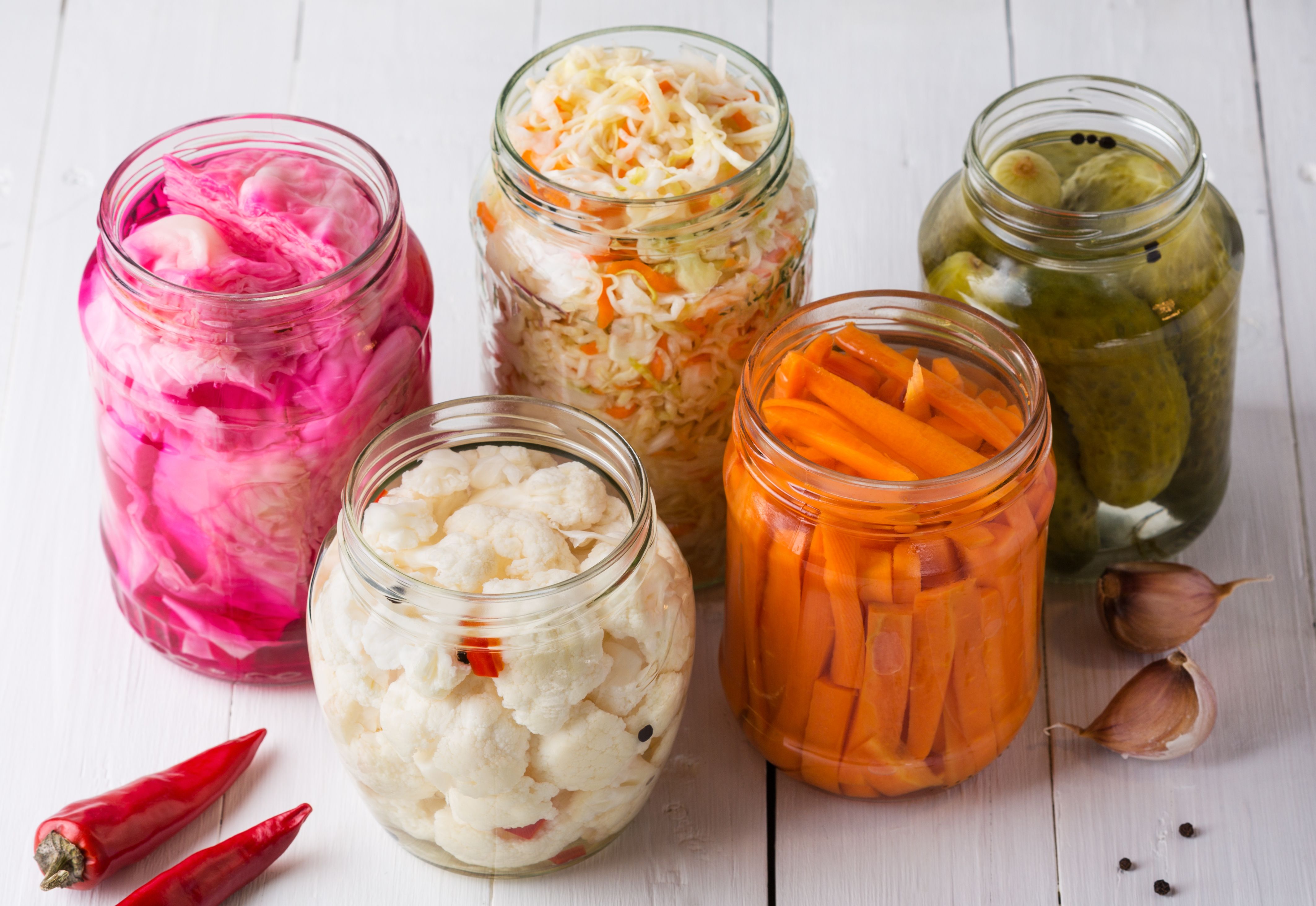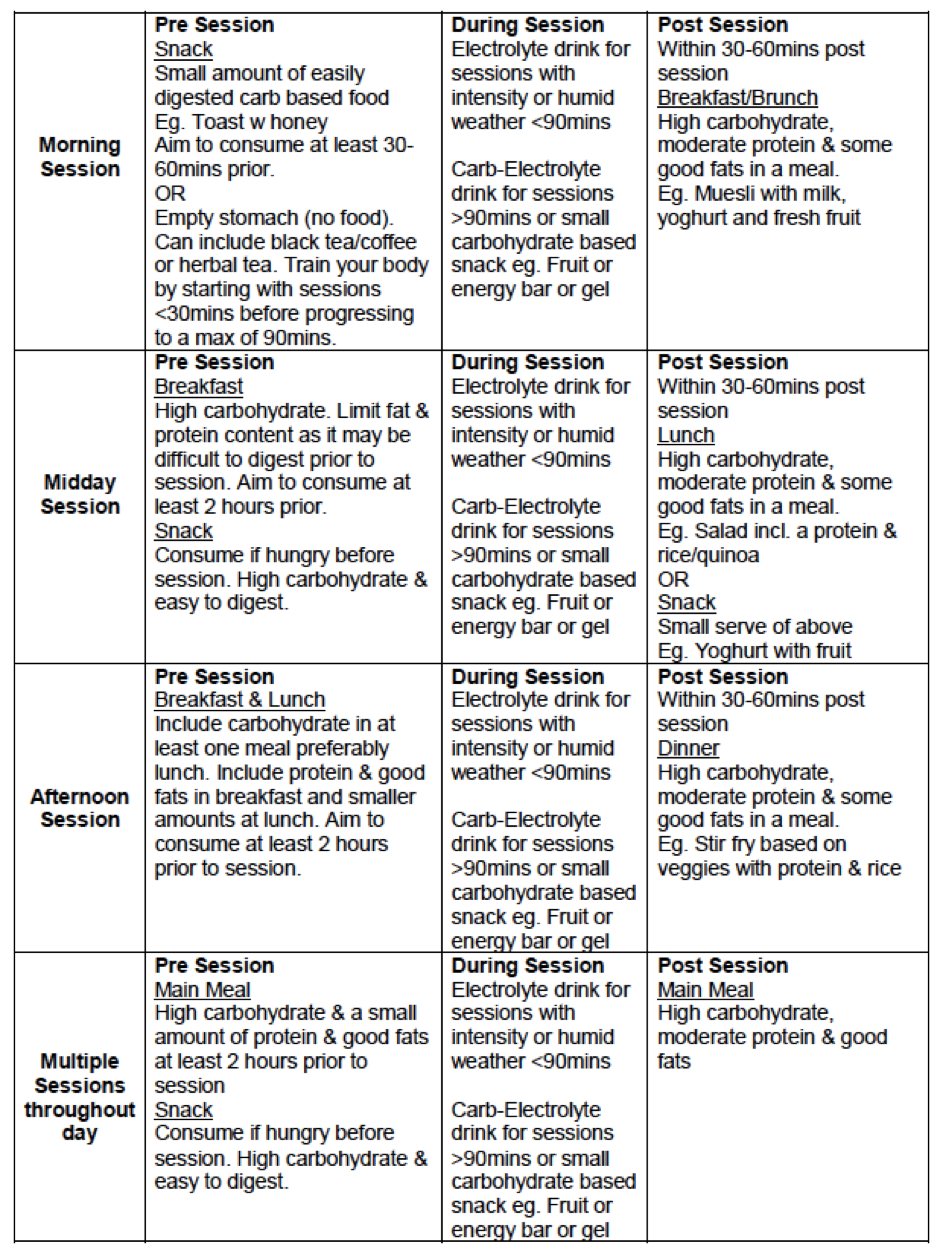Fermented Foods and Your Fitness: How Probiotics Enhance Performance
Explore the symbiotic relationship between fermented foods lined with probiotics, and their surprising impact on fitness performance. Covering how probiotics bolster the immune system, fortify gut health, and potentially enhance athletic endurance, we'll dive into the world of gut microbiota with a zest for knowledge and wellness. Plus, for health enthusiasts seeking to chart their fitness and nutritional journey, we offer a glimpse of the tech tool 'Workout Notepad app', an accomplice in the pursuit of peak performance.
WN
By Workout Notepad
March 20, 2024

Gut Instincts: A Fitness Ally You Didn’t Know You Had

gut microbiome illustrations
Gut Instincts: A Fitness Ally You Didn’t Know You Had
Our fitness journeys are often focused on the visible outcomes – the muscle gains, the endurance levels, and physical transformation. However, in the shadows of such celebrated victories lies an unsung hero that quietly influences our wellness odyssey: the gut microbiome. This vast community of bacteria residing within our digestive systems not only handles the breakdown and absorption of nutrients but also communicates with our immune system and even our brains, coordinating far-reaching impacts on our health. The state of our gut health can be the difference between vitality and fatigue, clarity and fogginess, and with recent studies pointing to the gut having a significant role in autoimmune responses and chronic diseases, paying attention to these microflora becomes not just a matter of digesting food, but of cultivating a body that’s optimized for performance.
Venturing into the microscopic world of our gut isn’t only about problem-solving ‘bad digestive days’ but also exploring how they holistically boost athletic performance. A healthy microbial balance can translate into a fortified immune system, more efficient energy management, and improved mental clarity — all paramount for those looking to enhance their fitness regime. As we delve deeper into the connection between a thriving gut and thriving muscles, it’s enlightening to discover that the way to someone’s athletic peak might just run through their stomach. In the upcoming sections, anecdotes and wisdom from ancient culinary arts of fermentation will reveal that such practices are more than just heritage—they could be the secret ingredient in today’s world of competitive sports and personal fitness milestones.
Fermented Foods: Culinary Cultures Boosting Your Workouts
Since time immemorial, humans have been enlisting the invisible army of microorganisms to preserve food and augment its flavors. This mystical transformation through the process of fermentation has alchemized simple sustenance into nutrient-dense superfoods. Delve into the depths of history, and you’d find jars of milk morphing into yogurt under the watchful eyes of Mesopotamian culinary savants, and ancient Chinese pharmacopoeias documenting the ancient wisdom that bodes well with today’s performance-enhancing diets. These time-honored traditions laid the foundation for the potently fragrant Korean kimchi, the lusciously thick Greek yogurts, and the fiery ferments from the Americas, with each culture brandishing its own champion ferment.
Jump to the contemporary fitness fervor, where the link between gut health and athletic prowess is being earnestly explored, and these ancestral culinary practices are making a triumphant resurgence in the diets of the health-conscious. Deconstruct any fermented masterpiece today, and you may find its microbial communities being meticulously curated using CRISPR/Cas9 technology – a far cry from the spontaneous fermentations of yore, but with the same fundamental purpose of enhancing human health. It’s not just about preservation now; it’s about engineering the microbiome within our fermented favorites to bring about specific health dividends – from quelling oxidative stress and firing up the immune response to lowering the odds against chronic maladies. In this symphony of science and tradition, the past marries the present, moving us beyond flavor to function, carving a delightful niche at the crossroads of nutrition and athleticism.
The Exercise-Microbiome Loop: A Two-Way Street
The nascent field of research into the two-pronged relationship between physical activity and the complexity of our gut microbiota is a source of both excitement and innovation in health and fitness. Pioneering studies paint a compelling picture of this interaction, revealing how a diverse array of internal microorganisms exert considerable influence over our body’s response to exercise. Engaging in regular, moderate to high-intensity physical activity doesn’t merely tone our muscles and bolster heart health; it actively shapes our inner microbial cosmos. As we lace up our sneakers and hit the track or the treadmill, our exertions don’t go unnoticed by the trillions of bacterial residents within our digestive tract. By increasing the abundance of beneficial microbial species and enriching our gut flora diversity, exercise empowers these tiny allies to play their crucial roles more effectively—including nutrient metabolism, immune system regulation, and the maintenance of a protective gastrointestinal barrier against pathogenic threats.
As we advance to the next level of our physical endeavors, be it running, cycling, or weightlifting, we simultaneously cultivate a more robust internal microbiome. Not only does this intricate ecosystem help regulate the movements of our alimentary canal, it assists in fortifying the body’s internal fortifications, contributing to a dynamic homeostatic environment conducive for peak athletic performance. Moreover, regular bouts of cardio or concurrent strength training, conceptualized in studies as more than thrice-weekly sessions extending over two months, can usher in significant alterations in microbial composition. This underscores the microbe-exercise continuum, where changing the diversity within us could, in turn, revolutionize how we ardently pursue that finish line. Here enter probiotics as the undetected pit crew in the marathon of training; the next section will explore how these microbial supplements could bolster this symbiotic relationship, enhancing recovery and ensuring that every run, jump, or swim counts towards a harmonious balance between body and microbe.
Probiotics: Your Personal Pit Crew for Enhanced Recovery
Probiotics could very well be likened to a dedicated pit crew watching over the internal race tracks of athletes, attending to the wear and tear that strenuous exercise imposes on their bodies. Just as a marathon runner prepares for the daunting 26.2 miles, a first-time competitor might find solace in the symbiotic support probiotics offer. As she tightens her laces before her early morning jogs, probiotic regiments work just as diligently, repairing her muscular micro-injuries, bolstering her immunity, and curbing oxidative stress. Supplementing with these microbial helpers paves the way for her body to rebound from the rigors of training, allowing for consistent progress and fewer setbacks, akin to how a well-oiled machine outlasts others in endurance races.
As the runner packs her nutritional arsenal — composed of carefully chosen fermented foods and tailored supplements — she inadvertently feeds her internal pit crew, the beneficial bacteria that have shown promise in improving performance and recovery. The relationship between an athlete’s diet and thpatorial cycle symbiosis is intricate, and as emerging research hints, perhaps profound. Stepping into the next section, we’ll lace up to journey through the appetizing world of an athlete’s dietary regime. We’ll explore how those bustling microbial critters — delivered through sources both natural and supplemented — potentially go the extra mile to boost endurance and speed, narrating the story through the dietary lens of both world-class champions and dedicated fitness enthusiasts alike.
Dishing Out Performance: Can Your Diet Outrun You?
In a domain where every nutrient counts and milliseconds can dictate the triumph or defeat, professional athletes and ardently dedicated fitness enthusiasts often bank on rigorous dietary regimens, frequently infused with specific probiotic strains, to edge out the competition. Their nutrient-intense diets, meticulously timed and balanced, stand in stark contrast to the more generalized healthy eating patterns recommended to the broader public. For these disciplined individuals, carbohydrates are not just food—they are precision tools for fueling and recovery. The carbohydrate intake is fine-tuned to match workout intensities, complemented by strategic probiotic intake to optimize digestion and boost immunity. High GI foods, consumed at calculated intervals before an event, prime the body’s energy reserves, while proteins and probiotics work in tandem post-exercise to hasten muscle recovery and rejuvenate the body’s defense mechanisms. Nutrition in the athletic realm isn’t just about eating right—it’s about tailoring each meal with surgical precision to the metabolic demands of the sport.
While elite athletes may gravitate towards specialized diets, nuanced with the subtleties of periodized carbohydrate intake and supplemented with curated probiotic strains, fitness enthusiasts emulate this paradigm at a more accessible scale. They leverage tools like ‘Workout Notepad’ to judiciously monitor their nutritional intake, identifying which foods yield the best performance output. Recording post-workout recovery times intimately intertwines consumption patterns with exercise routines, unveiling correlations that were once the preserve of high-performance sports dieticians. As the next section will explore, technologies like the ‘Workout Notepad’ app, which does more than just log workouts and diet, endows everyday fitness enthusiasts with something more valuable - insights into their personal development, and stamina, framing a tech-empowered approach to diet and exercise monitoring—turning what was once a cryptic puzzle into a data-driven strategy for peak performance.
Digesting the Data: Technological Digestion of Your Diet
In a gym sprinkled with the grunts of determination and the clink of metal, resides Jake, a tech-savvy gym-goer whose secret to unyielding stamina puzzled even the most seasoned trainers. It was not an antiquated leather-bound diet journal that Jake consulted, but rather the sleek interface of the Workout Notepad app on his phone. Colorful graphs and metrics danced at his fingertips, documenting his precisely calibrated intake of probiotic-rich foods and meticulously timed workouts. The app became his digital nutritionist, archiving every rep, snack, and sweat drop, transforming raw data into a tailored narrative that revealed the equation of his high energy levels and swift recovery.
The whispers in the gym began to morph into open curiosity as fellow fitness enthusiasts noticed Jake’s unwavering gusto session after session. It wasn’t long before they spied over his shoulder, catching glimpses of his technologically augmented dietary diary. Poised to reveal the mystical source of his mid-workout moxie, the app’s dazzling graphs illustrated not a mere counting of calories but an analytic alchemy of nutrients and their timely consumption. As Jake’s story fanned out across the floor, it seeded inspiration. His companions were reminded that while technology offered a window to unseen bodily processes, it’s imperative that they heed their biological feedback first and foremost. As the app led Jake from data to diet to deadlifts, it underscored the vital balance between digital diligence and physiological instinct—promising his peers that their own next chapter might fuse humor with hydration, tech with tenacity, in the ever-tantalizing pursuit of peak performance.
Cultivating Endurance: The Probiotic Training Regimen

endurance training and nutrition
Whether by fluke or fermentation, athletes across the world are waking up to the fortitude found in a jar of sauerkraut. As they blend their morning smoothies to the raw beat of kefir and kimchi, a new era of endurance is churning in the guts of the elite. Delving into the science, it’s no secret that fermented favors have a fist-pump of probiotics that can potentially push performance levels to a pedestal previously unperched. The literature lays it out like a map at a marathon: with roadblocks of small studies and gender-imbalanced research, yet guides us to tantalizing checkpoints of increased endurance, beefier strength, and a shield-like status against the sniffles that plague many a locker room. It’s not just a spoonful of yogurt; it’s the spoonful that might power the legs that persist and the lungs that last longer.
Translating these tasty tidbits into real regimens is the next course. A sprinkle of systematic study here, a dash of diversity there, and a hearty blend of controls to bind it all, cooks up a research recipe ripe for results. However, humor aside, the path forward beckons for a banquet of larger, more diverse trials to fully digest the effects of our probiotic pals on the courses that literally run our lives. Lace up, and let the probiotic parade begin because after all—when food becomes fuel, your stomach might just outrun your legs. Fueling up on evidence is not just for science geeks; it’s for the sneakers on the street and the cleats on the court. As we brandish our nutritional tracking tech and sip our kombucha cocktails, the next scoop of data digested might just be the crowning keystone of endurance. Next up, we’ll rally past the uncertainties, inspired by the gutsy tales of athletes who entrusted their gut to go the distance and uncorked a bubbly bonanza of a finish line.
Gut Feeling to Finish Line: Probiotic Journeys of Famous Athletes
As the article nears the finish line, the culmination of research and testimonials points to the power of probiotics within an athlete’s dietary arsenal. Tales of triumph by elite competitors who attribute part of their success to gut health offer an authentic testament to the potential of these microscopic coaches. The recovery sprints, achieved endurance peaks, and immune system defenses mirror the scientific findings of institutions like the Wyss Institute, leading us to acknowledge the stride-strengthening allies living within us. FitBiomics’ innovative approach to cultivating athlete-derived probiotics draws directly from these championship microbiomes, shedding light on the tantalizing prospect that gut microbiota, when balanced and bolstered, can indeed play a role in sporting excellence. While the direct impact of probiotics on athletic performance remains an ongoing field of discovery, the anecdotal evidence from athletes who have experienced fewer illnesses, such as upper respiratory tract infections, and improvements in overall well-being indicates that the inclusion of strategic probiotic strains may cross the line from alternative wellness to essential dietary component for competitors at all levels.
Invigorated by the journeys of those who reached the podium thanks in part to their microbe-rich diets, readers should feel inspired to rethink their relationship with their gut. Whether it’s integrating fermented foods loaded with probiotics, taking targeted supplements devised from the biome blueprints of the fitness elite, or even just paying closer attention to gut health, these steps may well be the starting gun for a personalized path to peak performance. Though further research is warranted to concretely link gut flora and athletic accolades, one can’t help but marvel at the correlations. In considering their own fitness and health objectives, readers might see the transformative benefits that could arise from a symbiotic relationship with the tiny tenants of their digestive tract as they strive to turn their own gut feeling into a personal record at the finish line.
SOURCES
- https://www.ncbi.nlm.nih.gov/pmc/articles/PMC8583504/
- https://www.ncbi.nlm.nih.gov/pmc/articles/PMC9734205/
- https://hips.hearstapps.com/hmg-prod/images/fermented-vegetables-sauerkraut-with-carrots-and-royalty-free-image-1653341418.jpg
- https://www.parkview.com/blog/the-importance-of-gut-health
- https://granitegastro.com/the-importance-of-maintaining-gut-health-for-overall-wellbeing/
- https://d2jx2rerrg6sh3.cloudfront.net/images/news/ImageForNews_739404_16769417747104968.jpg
- https://www.ncbi.nlm.nih.gov/pmc/articles/PMC8618017/
- https://www.ncbi.nlm.nih.gov/pmc/articles/PMC9227559/
- https://www.ncbi.nlm.nih.gov/pmc/articles/PMC5357536/
- https://www.ncbi.nlm.nih.gov/pmc/articles/PMC10054511/
- https://www.ncbi.nlm.nih.gov/pmc/articles/PMC8583504/
- https://www.ncbi.nlm.nih.gov/pmc/articles/PMC9914962/
- https://www.betterhealth.vic.gov.au/health/healthyliving/sporting-performance-and-food
- https://www.ncbi.nlm.nih.gov/pmc/articles/PMC4540168/
- https://www.womensrunning.com/gear/tech-wearables/nutrition-trackers-reviewed/
- https://www.todaysdietitian.com/enewsletter/enews_0421_01.shtml
- https://www.ncbi.nlm.nih.gov/pmc/articles/PMC8583504/
- https://www.ncbi.nlm.nih.gov/pmc/articles/PMC9914962/
- http://gpcsquad.com.au/wp-content/uploads/2017/06/Daily-Nutrition-Plan-for-Endurance-Training.png
- https://wyss.harvard.edu/technology/athlete-derived-probiotics/
- https://www.ncbi.nlm.nih.gov/pmc/articles/PMC8583504/
